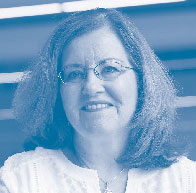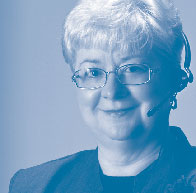LD+A asked a quartet of industry experts to predict whether connected lighting or light and health will generate more jobs in the next three years. The vote was unanimous
By Paul Tarricone
Light and health and connected lighting. They are the buzziest of buzzwords and the hottest of hot topics in the lighting sphere. But which will translate into more jobs over the next few years? We put that question to a panel representing the recruiting and manufacturing sectors of our industry. All four went with connected lighting. Here’s why:
Ted Konnerth
Egret Inc.
 While healthcare represents nearly 20% of the U.S. GDP, and growing, it’s also a heavily regulated industry. As such, healthcare lighting is an attractive future market, but it’s also in infancy relative to clinical trials and demonstrated, scientific results. The sheer complexity of testing limitless combinations of bandwidths against specific health attributes is overwhelming. The current body of health and lighting research, on humans, at least, is limited, with many studies representing no more than colloquial observations on very limited numbers of subjects. While there are organizations attempting to clinically implement healthcare lighting, I feel they’re risky ventures. Light bulbs touting “health” benefits will come under scrutiny from the FDA or FTC to document claims of improving health effects. Clinical research is slow and methodical, as it should be.
While healthcare represents nearly 20% of the U.S. GDP, and growing, it’s also a heavily regulated industry. As such, healthcare lighting is an attractive future market, but it’s also in infancy relative to clinical trials and demonstrated, scientific results. The sheer complexity of testing limitless combinations of bandwidths against specific health attributes is overwhelming. The current body of health and lighting research, on humans, at least, is limited, with many studies representing no more than colloquial observations on very limited numbers of subjects. While there are organizations attempting to clinically implement healthcare lighting, I feel they’re risky ventures. Light bulbs touting “health” benefits will come under scrutiny from the FDA or FTC to document claims of improving health effects. Clinical research is slow and methodical, as it should be.
IoT is the shiniest object on the planet. IoT attracts talent from technology, software, data analytics, engineering and computing, with direct applications into industries that encompass most of society: security, HVAC, manufacturing, transportation, energy, healthcare, government, military and… lighting!
I believe IoT will continue to expand rapidly and the “smart” applications will blend the boundaries of traditional trade roles in all the industries, such that lighting IoT solutions will compete with HVAC, security, building automation solutions and more. With the explosive growth in sensors and computing power, the definition of “smart” and the applications for terabytes of measured sensor data will become a huge job growth market.
In short, this isn’t close. The near-term winner is IoT.
Jon Memsic
Jon Memsic Recruiting
 While both light and health and smart connected lighting will be developing new products and require additional personnel in their respective markets, I believe the smart IoT space will grow at a much faster pace and have a larger impact on the jobs market over the next five years. The primary reason is that the IoT and connected cities will affect more than just lighting and controls manufacturers. Datadriven companies including Verizon, AT&T, Sprint, T-Mobile, Facebook, Google, Apple, Microsoft and Amazon have already started incorporating wireless technology into outdoor and indoor lighting, and this market will continue to expand with potentially new players who have not entered this market yet (think FedEx and UPS).
While both light and health and smart connected lighting will be developing new products and require additional personnel in their respective markets, I believe the smart IoT space will grow at a much faster pace and have a larger impact on the jobs market over the next five years. The primary reason is that the IoT and connected cities will affect more than just lighting and controls manufacturers. Datadriven companies including Verizon, AT&T, Sprint, T-Mobile, Facebook, Google, Apple, Microsoft and Amazon have already started incorporating wireless technology into outdoor and indoor lighting, and this market will continue to expand with potentially new players who have not entered this market yet (think FedEx and UPS).
The connected space will require technical software along with hardware engineers who map out the grid for connectivity. The data collected will be extremely valuable in providing efficiency, energy consumption and usage data for municipalities, co-ops, utilities, DOTs, public education and manufacturing. In a few years, the three-pin photo connector for ON/OFF lighting will seem prehistoric; similar to how we view the first cell phones that came in a bag with a heavy battery back in 1985.
Cheryl English
Acuity Brands Lighting
 Smart/IoT connected lighting will be the winner. While light and heath continues to be a subject of great importance, there are several metrics that have been proposed by researchers to assist in the proper design and application for circadian entrainment for day-active workers. There is a movement toward responsible designs to promote health and well-being, and it is my opinion that this will become a standard criteria for design. The breadth of product technologies and application features for smart/IoT connected lighting will continue to expand and coordinate with many other building technologies or site infrastructure.
Smart/IoT connected lighting will be the winner. While light and heath continues to be a subject of great importance, there are several metrics that have been proposed by researchers to assist in the proper design and application for circadian entrainment for day-active workers. There is a movement toward responsible designs to promote health and well-being, and it is my opinion that this will become a standard criteria for design. The breadth of product technologies and application features for smart/IoT connected lighting will continue to expand and coordinate with many other building technologies or site infrastructure.
The impact of smart lighting will support improved health and well-being, but will provide additional utility such as wayfinding, safety and security, energy management, analytics and various user features to change our industry and human interaction in very profound ways. And as technology continues to advance, the capabilities to improve products, design and our environment will continue to evolve for decades to come.
Mary Lindenmuth
The Pompeo Group
 Smart lighting/IoT/connected lighting will create more jobs. The one commonality in every building is lighting fixtures. We’ve gone from dimming and sensing a presence to connecting most every function in our homes, businesses and cities utilizing IoT. Although computer science is not considered an engineering degree per se, the demand for computer science majors who can develop new innovations in the IoT sector—especially those with the belief that if it can be imagined it can be developed—will continue to be a hot ticket. Right along with that is the ongoing need and urgency to develop cybersecurity.
Smart lighting/IoT/connected lighting will create more jobs. The one commonality in every building is lighting fixtures. We’ve gone from dimming and sensing a presence to connecting most every function in our homes, businesses and cities utilizing IoT. Although computer science is not considered an engineering degree per se, the demand for computer science majors who can develop new innovations in the IoT sector—especially those with the belief that if it can be imagined it can be developed—will continue to be a hot ticket. Right along with that is the ongoing need and urgency to develop cybersecurity.

